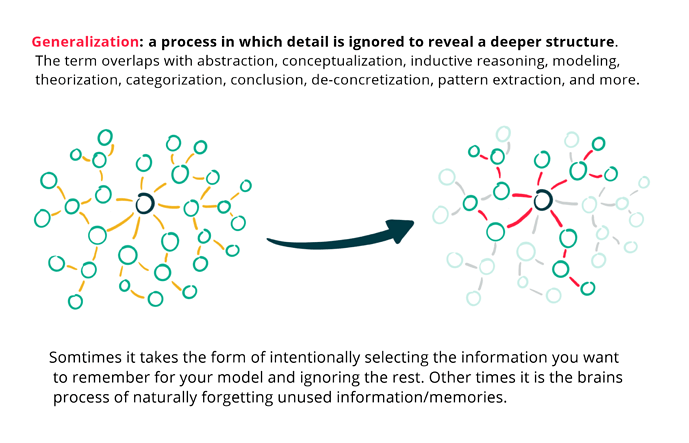40 - Generalization “is the process in which you ignore the details to reveal a deeper structure. The term overlaps with abstraction, conceptualization, inductive reasoning, modeling, theorization, categorization, conclusion, unification, colligation, de-concretization, pattern extraction, and pattern separation” (Wozniak 2020).
You also see this process happening with memory, where information disappears as you go from sensory memory → working/short term memory → long-term storage → retrieval from long term storage. See Memory Consolidation.
Abstractness
